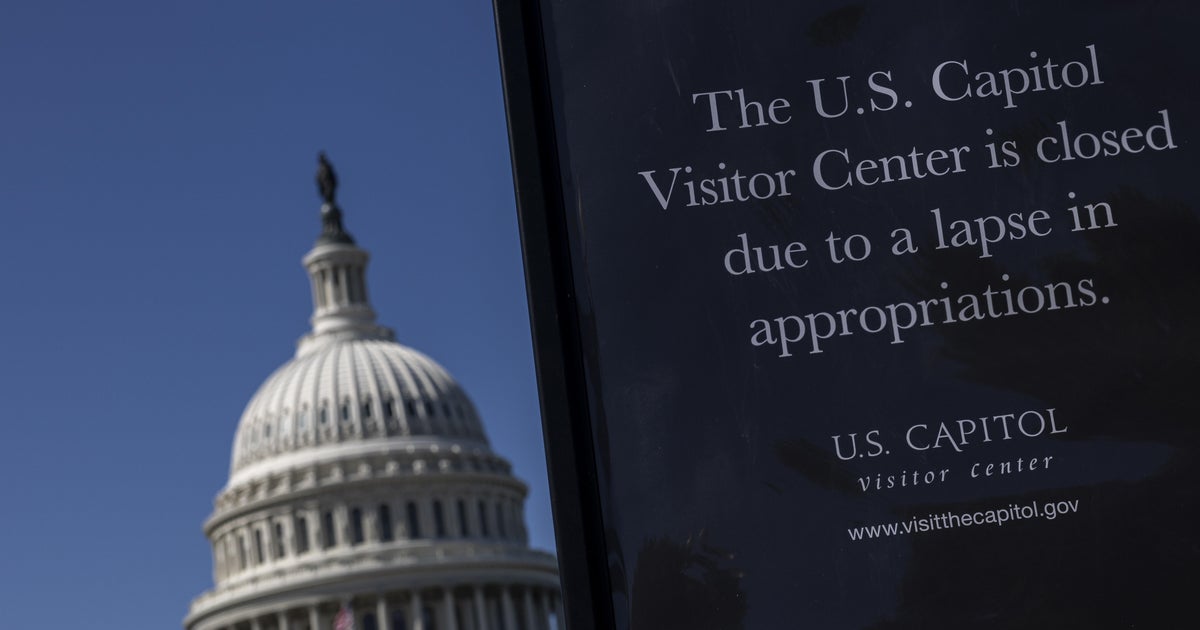
Washington — The fight over funding the government is likely to be a costly one.
Each week of the ongoing government shutdown could cost the economy $7 billion and reduce GDP growth by 0.1 percentage points, according to an estimate published by EY-Parthenon chief economist Gregory Daco. That cost is a function of reduced pay for federal employees, delayed government procurement of goods and a decline in demand.
To some extent, a portion of that economic cost would be reversed when the government reopens, as furloughed employees receive back pay and economic activity increases, the analysis said.
It’s likely that not everything would be reversible, though. The last shutdown — which was during President Trump’s first term and lasted 34 days, beginning in December 2018 and ending in January 2019 — cost the U.S. economy about $11 billion, according to the Congressional Budget Office.
During that shutdown, the longest on record, the Congressional Budget Office estimated that real gross domestic product in the fourth quarter of 2018 took a $3 billion hit (in 2019 dollars). And it estimated that in the first quarter of 2019, real GDP was “$8 billion lower than it would have been — an effect reflecting both the five-week partial shutdown and the resumption in economic activity once funding resumed.”
The shutdown could shake Americans’ faith in the economy, too. EY-Parthenon notes that at the time, the 2019 shutdown led to the sharpest monthly drop in the University of Michigan’s Consumer Sentiment Index up since 2012.
Some of the shutdown costs also stem from the administrative effort necessary to create contingency plans when the government is shut down and reopened. Agencies lose user fees collected from visitors to the national parks or from people seeking certain federal permits or visas. And there are higher premiums in federal contracting during a shutdown and the back pay federal employees eventually receive when the government reopens.
Current federal law requires that federal workers be paid at their regular rate, whether they’re furloughed or not, once the government is operating again. In a new analysis cited by the White House, the Congressional Budget Office estimates the federal government will pay $400 million a day for furloughed employees, who will not be working during the shutdown.
A September 2019 report from a Senate Committee on Homeland Security and Governmental Affairs subcommittee estimated the last three government shutdowns in 2013, 2018 and 2019 “cost taxpayers nearly $4 billion — at least $3.7 billion in back pay to furloughed federal workers, and at least $338 million in other costs associated with the shutdowns, including extra administrative work, lost revenue, and late fees on interest payments.”
The White House Office of Management and Budget estimated that during the 16-day shutdown of 2013, federal employees received $2.5 billion in pay and benefits for hours they did not work, plus $10 million in penalty interest payments and lost fees.
2025 shutdown
But this time may be different. President Trump, Vice President JD Vance and Russell Vought, the OMB director, say layoffs will happen soon if the shutdown continues, so the net fiscal impact of a shutdown to the federal government is a little harder to predict right now. Vought immediately began freezing or slashing federal funding for projects, largely in blue states, during the shutdown. The Trump administration is withholding $18 billion in infrastructure projects in New York City, and cutting funding for climate-related projects in many states that Kamala Harris won.
Vought also told Republican lawmakers Wednesday that Reduction in Force — or RIF — cuts would begin in two days.
The president said Tuesday “a lot of good can come down from shutdowns,” and suggested Vought could use the shutdown to permanently cut federal workers and programs the administration doesn’t want but that have the backing of Democrats.
“We can do things during the shutdown that are irreversible for them, that are bad for them and irreversible by them,” Mr. Trump said of Democrats. “Like cutting vast numbers of people out, cutting things that they like, cutting programs that they like.”
